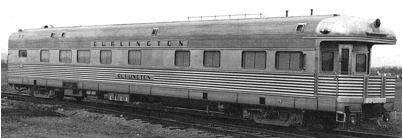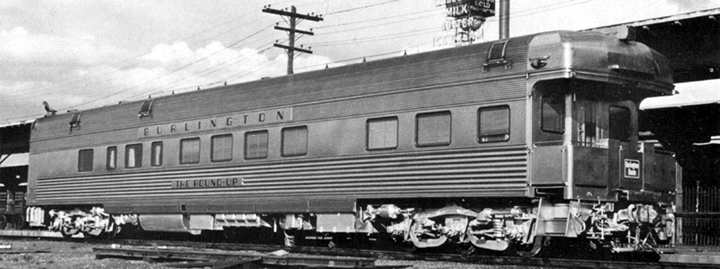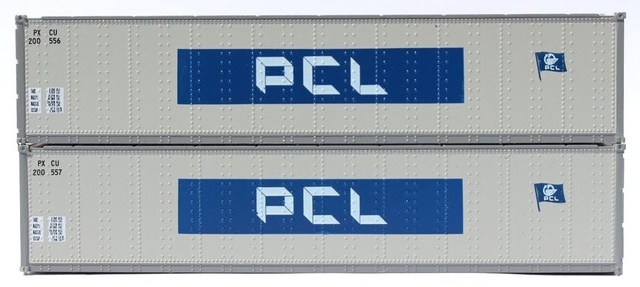History: In the post-war period, passenger rail service boomed. In order to increase efficiency, the railroads set to replacing their old wood, steel and concrete heavyweight passenger cars with newer lightweight, streamlined cars. The new cars were made from stainless steel, aluminum and Cor-Ten steel. These cars required less motive power to pull and were cheaper to manufacture. Production was also concentrated in a few manufacturers rather than each railroad making its own. This led to standardization which further reduced costs. The new "lightweight" cars were also given "streamlined" designs to make them more visually appealing. Budd, Pullman Standard and ACF were all well known manufacturers of these cars. Budd was well known for their corrugated cars (for which they held a patent).
Also known as Private Cars, Business Cars have existed since the early days of railroading. They are generally self-contained with office, meeting room, track inspection, entertainment, dining and sleeping facilities on board for railway officials and their invited guests. Assigned to key railway personnel for the purpose of inspecting track and traveling on company business, these cars were often handled on the rear of a convenient regularly scheduled passenger run. Today, it is not uncommon to see them at the back of an Amtrak or freight train.
Also known as Private Cars, Business Cars have existed since the early days of railroading. They are generally self-contained with office, meeting room, track inspection, entertainment, dining and sleeping facilities on board for railway officials and their invited guests. Assigned to key railway personnel for the purpose of inspecting track and traveling on company business, these cars were often handled on the rear of a convenient regularly scheduled passenger run. Today, it is not uncommon to see them at the back of an Amtrak or freight train.
Railroad/Company: The Budd Company was a 20th-century metal fabricator, a major supplier of body components to the automobile industry and a manufacturer of stainless steel passenger rail cars, airframes, missile and space vehicles, various defense products.
Budd was founded in 1912 in Philadelphia by Edward G. Budd, whose fame came from his development of the first all-steel automobile bodies in 1913 and, in the 1930s, his company's invention of the "shotweld" technique for joining pieces of stainless steel without damaging its anti-corrosion properties.
Budd Company became part of Budd Thyssen in 1978 and in 1999 a part of ThyssenKrupp Budd. Body and chassis operations were sold to Martinrea International in 2006. No longer an operating company, Budd filed for bankruptcy in 2014. It currently exists to provide benefits to its retirees.
Read more on Wikipedia.
Budd was founded in 1912 in Philadelphia by Edward G. Budd, whose fame came from his development of the first all-steel automobile bodies in 1913 and, in the 1930s, his company's invention of the "shotweld" technique for joining pieces of stainless steel without damaging its anti-corrosion properties.
Budd Company became part of Budd Thyssen in 1978 and in 1999 a part of ThyssenKrupp Budd. Body and chassis operations were sold to Martinrea International in 2006. No longer an operating company, Budd filed for bankruptcy in 2014. It currently exists to provide benefits to its retirees.
Read more on Wikipedia.
Item Links: We found: 1 different collections associated with Rail - Passenger Car - Budd
- Collection N Scale Model Trains: 25 different items.
Item created by: gdm on 2018-03-05 11:02:44
If you see errors or missing data in this entry, please feel free to log in and edit it. Anyone with a Gmail account can log in instantly.
If you see errors or missing data in this entry, please feel free to log in and edit it. Anyone with a Gmail account can log in instantly.









